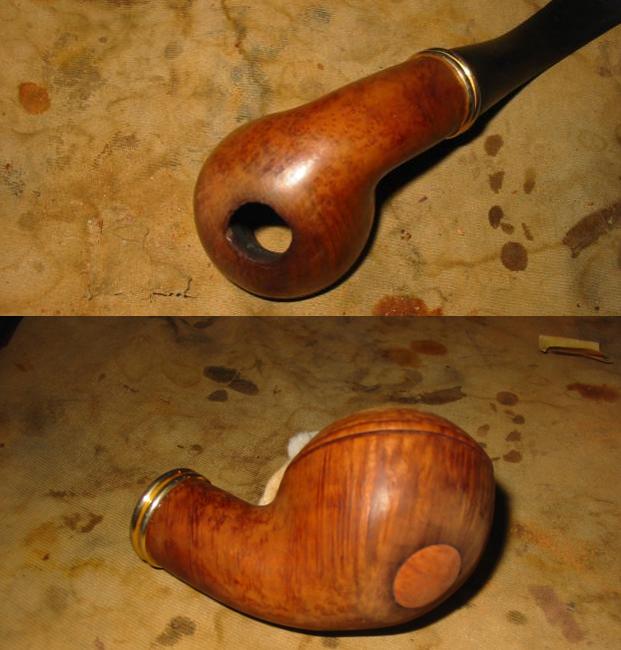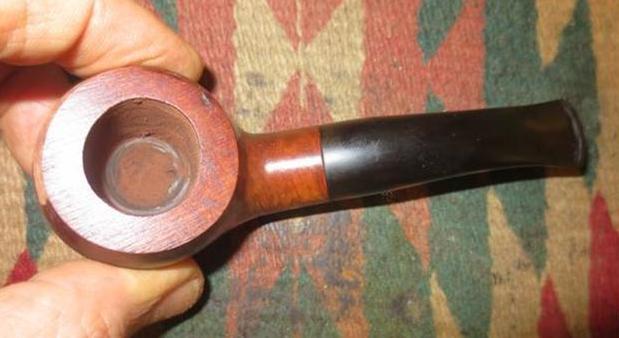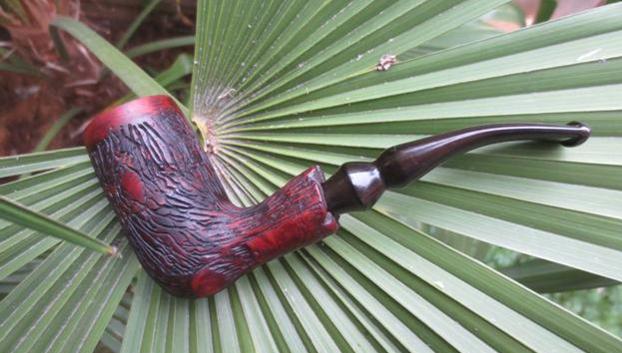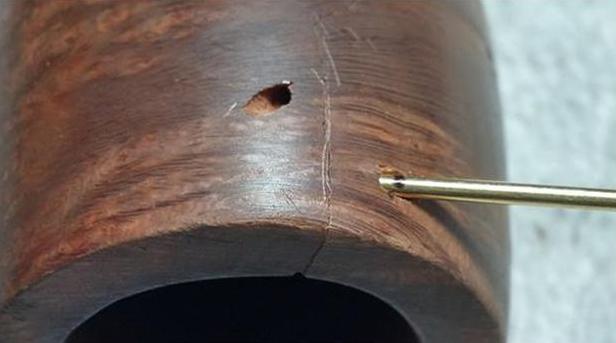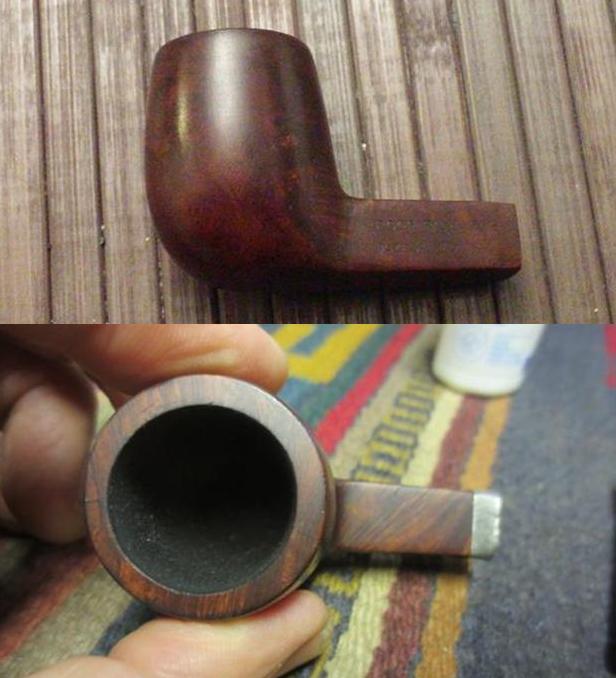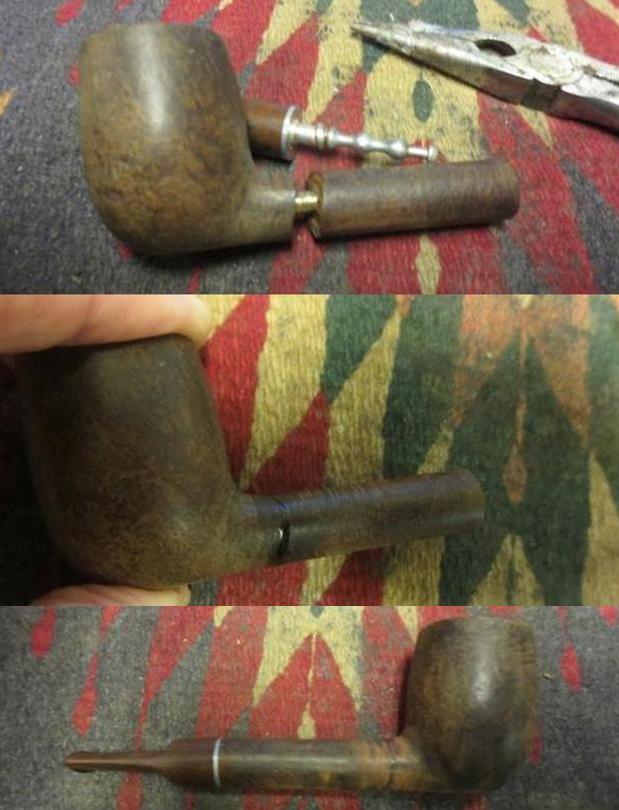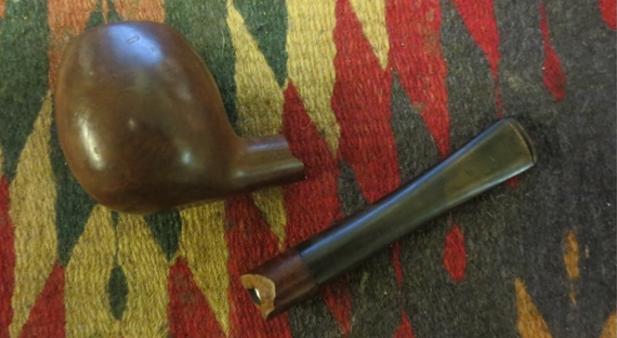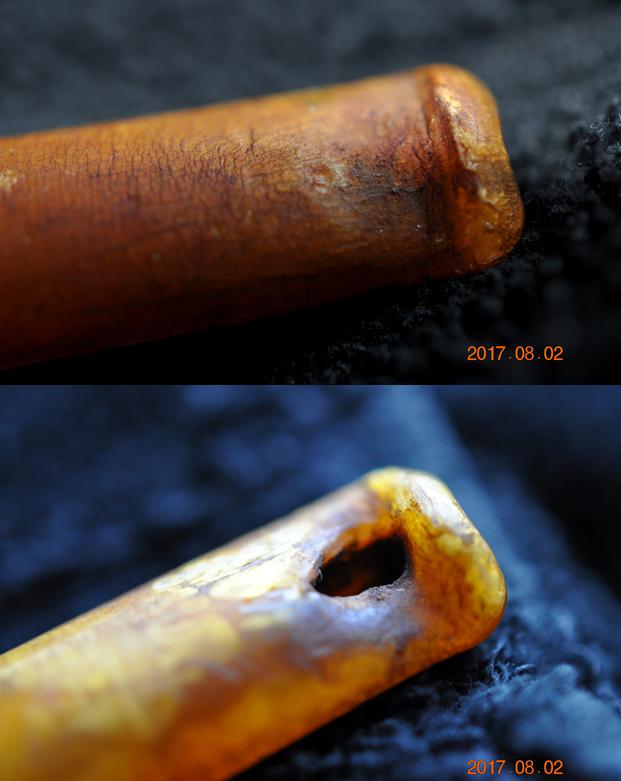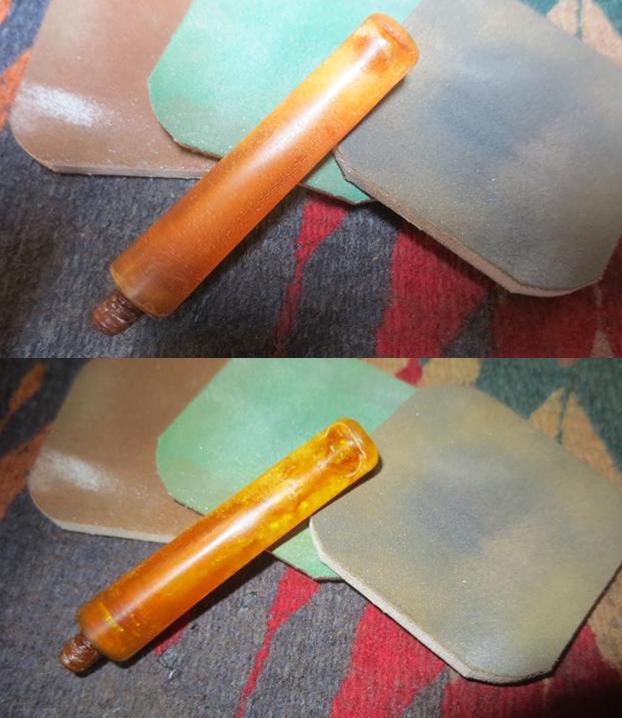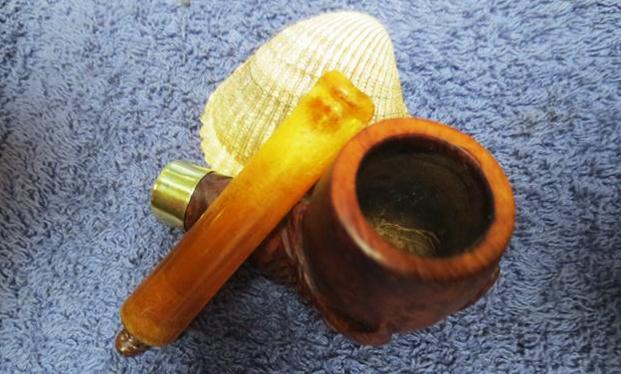Blog by Steve Laug
Another of the questions that I am frequently asked is about how to remove a tobacco ghost from a pipe. For some folks it is a matter of removing the ghost of Latakia from an estate pipe so they can smoke a favourite Virginia or aromatic without the smoky overtones coming through from the past. For others it is the opposite – how to remove the sweet, candy-like ghost from a past pipe man. However, one I hear about most often involves the left over smells and tastes left behind in a pipe from Lakeland tobaccos. Folks want to remove that ghost of “grandma’s perfume”, the floral scent that stubbornly clings to a pipe even after a thorough cleaning. I thought it was worth devoting an Answers to Questions Blog to addressing some of the different methods that can be used to address the ghost in the pipe.
All of the methods that I will write about assume that the pipe has been thoroughly cleaned before using them. It is easier to work on a pipe that is not filthy with tars, oils and debris than otherwise. I am sure that others may think that this pre-clean is not necessary but I have found that it is not only necessary but also essential to getting the best deep clean possible. I will summarize the way I do this cleanup in the form of a checklist.
___ Remove the stem and clean out the airway in the stem with alcohol and pipe cleaners. Repeat the process until the pipe cleaners come out clean.
___ Clean out the mortise area in the shank with cotton swabs and alcohol to remove the obvious buildup in that area. Check the walls of the mortise to see if there is any hardened buildup on the walls. If so, scrape it out with a thin blade – I use a penknife or a dental spatula to scrape the walls. Be careful to not cut into the briar in the walls.
___ Clean out the airway between the end of the mortise and the bowl. You can use pipe cleaners and alcohol to begin this process however; I have found that the airway is often quite constricted with tars and oils. I use the drill bit that comes with the KleenReem pipe tool and twist it into the airway in the mortise carefully until the tip comes out in the bowl.
___ Clean off the drill bit and wrap a pipe cleaner up the grooves of the bit. Dip the bit in alcohol and twist it into the airway once again. It will remove the grime and open the airway. I repeat that until the pipe cleaners come out clean.
___ Finish the process by running pipe cleaners and alcohol into the shank – mortise and airway to remove any remaining debris.
When that process of “pre-cleaning” is complete the pipe is ready for the deep cleaning of “ghost busting” methods I will describe next. I have used the all of the methods for over 20 years now and I have found that they all work far better after a thorough pre-clean as I have described above. I will cover the three methods that I use in the order that I use them. In most cases, one method can bust the ghost from a pipe. However, as usual in this hobby there are exceptions. I have found that there are some very stubborn ghosts that do not leave the pipe until I have used all of the methods.
Pipe Retort System
I have written several blogs on the use of a pipe retort covering how it is used and an instructional sheet included with the retort I purchased on eBay. I am including those links here if you want to read in more detail about the use of a retort system. https://rebornpipes.com/2012/10/17/what-is-a-pipe-retort-and-how-it-is-used/
https://rebornpipes.com/2015/03/02/an-instruction-sheet-for-using-a-pipe-retort/ A short explanation of the system is that it involves boiling alcohol through the pipe and then removing the heat and letting the dirty alcohol exit the pipe back into the attached test tube. I will use a checklist once again to spell out the process.
___ Materials needed are cotton balls, isopropyl alcohol, surgical tubing, a pipet or metal tube, a rubber stopper that will hold the tube, a Pyrex heat resistant test tube and a heat source. The surgical tubing is attached to the pipet/tube and then the tube is put through the stopper. The open end of the surgical tube is fit over the end of the stem.
___ Pour alcohol into the test tube until it is half-full. Put the stopper in the test tube to keep the alcohol in place.
___ Fit the open end of the surgical tube over the button end of the mouthpiece (leave the mouth piece attached to the shank).
___ Gently stuff one or two cotton balls in the bowl of the pipe to keep the alcohol inside when it is heated.
___ Hold the end of the test tube over the heat source and the heat will bring the alcohol to a rolling boil. The stem will warm up as the alcohol moves through it. Hold the tube by the rubber stopper at about a 33-degree angle – enough to encourage the heating alcohol to move through the pipe.
___ The alcohol boil through the pipe for 5 minutes or more then remove the tube from the heat source. As the alcohol cools, it flows back into the test tube bringing the tars, oils and debris with it.
___ Remove the stopper from the test tube and dispose of the dirty alcohol. Refill and repeat the process until the boiled alcohol comes back clean.
___ Remove the retort from the pipe and run clean pipe cleaners through the airways and cotton swabs through the mortise to remove any remaining debris.
Once the pipe has dried out, smell it and see if the ghost remains. Take a couple of draws on the stem to see if there is any remaining flavor from the ghost. If the ghost has been “exorcised” you can do a simple wipe down, buff the bowl and stem with either a buffer or by hand to raise a shine and remove any signs of the retort. I give my pipe a day to dry out then load a bowl and enjoy the first smoke in this refreshed bowl. However, if it still reeks of the ghost’s presence there are several more options that we can use.
Salt and Alcohol/Cotton Ball and Alcohol Treatment
I have written several blogs regarding the use of the salt and alcohol treatment already and have compared it with using cotton balls in place of the kosher salt. Both work equally well in pulling the tars and oils out of the briar bowl and shank. I have moved away from using the kosher salt with the alcohol to cotton balls because it is less of a mess and for me removes some of the threat that others have mentioned regarding the salt splitting the briar. The cotton balls and alcohol are just as effective in removing the tars and oils from the briar as the salt. The concept is simple in that the surface of the cotton or salt provides somewhere for the tars to rest once the alcohol draws them out of the briar. Here are the links to two of the blogs I have written on this treatment previously on rebornpipes. Give them a read if you want more details of either treatment or a comparison of the two.
https://rebornpipes.com/2013/02/08/to-use-or-not-to-use-the-salt-and-alcohol-treatment/
https://rebornpipes.com/2013/02/10/sweetening-a-pipe-an-alternative-to-the-salt-and-alcohol-treatment/ I will use a checklist once again to spell out the process.
___ Whether you use cotton balls or Kosher salt (coarse grind) the beginning step is the same. Remove the stem from the pipe. Fill the bowl of the pipe with either one leaving some room at the top of the bowl. The idea is to leave enough room that once the bowl is filled with alcohol it does not splash onto the rim top or down the sides and damage the bowl.
___ Insert a twisted piece of paper towel or a pipe cleaner into the shank of the pipe to keep the mixture in the bowl from flowing out the mortise.
___ Use an ice cube tray or a bowl of uncooked rice to hold the pipe upright with the shank elevated enough that the mixture does not wick out of the bowl.
___ Use an ear syringe or some other simple tool to fill the packed bowl with alcohol. I use isopropyl alcohol (99%) because of the low water content of the alcohol and I find that by the time I empty the bowl most if not all of the alcohol has evaporated.
___ Leave the bowl sitting overnight to maximize the draw of the mixture on the oils and tars in the bowl. I find that typically in the morning, after the mix has sat all night, the cotton balls or salt are very dark brown and smell awful.
___ Remove the cotton balls or salt and dispose of them. Dry out the inside of the bowl with paper towels of cotton swabs, run several pipe cleaners through the shank to dry out the briar and remove any debris.
___Let the pipe dry thoroughly before putting the stem on the shank. I usually let it sit for 2-3 days to ensure that it is dry.
Once it has dried out smell the bowl to check if you have eradicated the ghost using this procedure. You may have to repeat the process several times to remove all of the oils and tars from the briar. (Because of the repetition, I find that the cotton balls work better and do not leave any salty residue in the briar of the bowl or shank.) After the pipe has been sitting and it has dried out then load a bowl and enjoy the first smoke in this refreshed bowl. However, if it still reeks of the ghost’s presence there one more trick that we can use.
Activated Charcoal Treatment
(I have yet to have this final method fail.) You might think that you can short cut to this method first and avoid all of the other methods. I do not do that as I find that the majority of ghosts are “exorcised” with the first two methods spelled out above. I leave this final method as my last resort. It is simple but many folks find it a bit intimidating. It was first spelled out in an article by Greg Pease that he originally wrote in for the now out of print Pipe Friendly Magazine (it appeared in Vol. 5 No. 4). He has since added it to his Briar & Leaf Chronicles (GLP Blog). It is a well-written piece that gives the results of his experimenting with the method and the results he achieved. What he has written should allay your fears about trying out his method. Here is the link to the blog: http://www.glpease.com/Articles/Spot.html. I will use a checklist to summarize the process of his method.
___ Heat the oven (electric is what Greg used though I use a gas stove) setting the thermostat to 180°F. (Greg’s experimental tests had shown him that the temperature in an empty oven would vary between about 180°F and a bit over 200°F, which well below the temperature at which the briar would scorch.
___ Remove the stem, place the empty bowl on a towel in the oven, on the upper rack, far away from the source of radiant heat, and let it sit for three hours.
___ Remove the now hot pipe and fill the bowl with the activated charcoal.
___ Place the bowl back in the oven for an additional three hours.
___ After three more hours remove the pipe and empty the charcoal.
___ Smell the bowl and see if there is any trace of ghost.
Allow the pipe to cool overnight before putting the stem on it. I run pipe cleaners through the bowl to remove any of the carbon bits that might be in the shank then load a bowl and enjoy the refreshed bowl. Give Greg’s article a read if you want more detail on this method along with a couple of disclaimers he gives. The method works well.
Those are the three methods I use to de-ghost a pipe. Each of them is used after a thorough cleaning of the pipe to make the method more effective. I would encourage you to give them a try if you want to remove a ghost of past tobaccos from your pipe or even just sweeten a pipe that has grown sour. With that I bring this Answers to Questions blog to a close. I hope that it has given you some insight the methodology for the process of de-ghosting. Thank you for taking time to read this blog. Cheers.
 ter cleaning, refurbishing and restoring pipes for more years than I care to remember I continue to receive emails with questions that readers have about the restoration process and other more philosophical questions.
ter cleaning, refurbishing and restoring pipes for more years than I care to remember I continue to receive emails with questions that readers have about the restoration process and other more philosophical questions.


